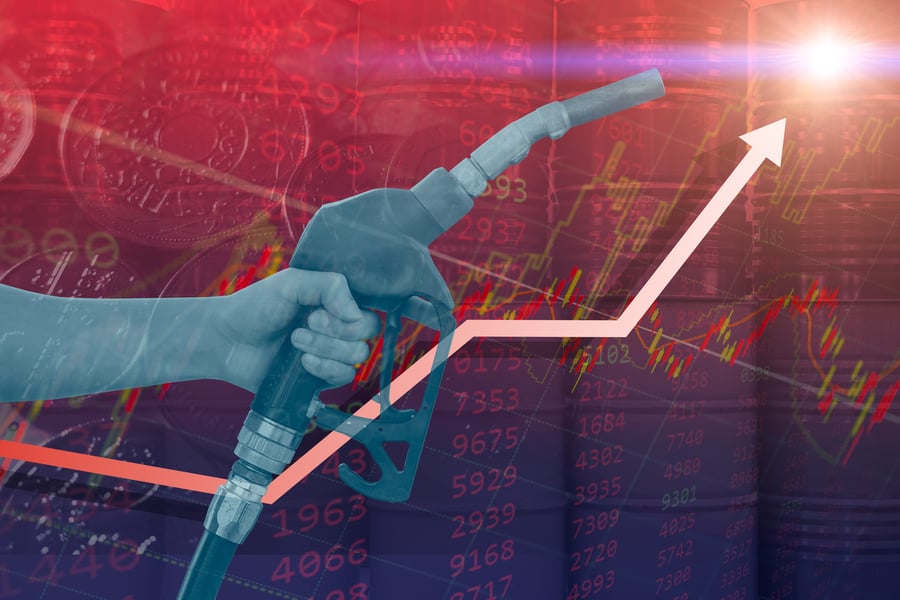Navigating the Shift: The Impact of Rising Oil and Gas Production

U.S. Energy Information Administration Predicts Lower Retail Gasoline Prices in 2025 and 2026
In President Donald Trump’s second term inauguration address he said that America had the largest amount of oil and gas of any country on earth “and we are going to use it.”
“We will bring prices down, fill our strategic reserves up again right to the top, and export American energy all over the world,” said Trump. “We will drill, baby, drill.”
Trump’s Commitment to U.S. Energy Production
Trump’s promise to increase oil and gas production was followed by an executive order declaring a national energy emergency, a directive aimed at “unleashing American energy” which encourages energy exploration on Federal lands and waters, and the establishment of a National Energy Dominance Council.
“Taken together, the actions underscored Trump’s commitment to increase U.S. energy production, particularly fossil fuels such as oil and natural gas, and remove regulatory barriers that may slow that down,” reported the Associated Press.
The White House says the “championing domestic energy production is vital both for mitigating price shocks to American families and de-risking the energy supply chain for our nation as well as our allies.”
The U.S. Energy Information Administration (EIA) is predicting that retail gasoline prices will be lower in 2025 and 2026.
Let’s look closer at how increased oil and gas production will affect fuel pricing strategies.
Abundant Domestic Supplies Typically Keep Fuel Prices Lower
The EIA’s first Short-Term Energy Outlook for 2025 brought positive news as Fleet Owner magazine reported that “in broad strokes, the administration anticipates crude oil costs will decrease over the next two years while U.S. production increases.”
Increased oil and gas production can significantly impact fuel pricing strategies in several ways:
- Supply-Demand Balance: When production increases, the greater supply typically puts downward pressure on wholesale prices, which can lead to lower retail fuel prices. This gives retailers more flexibility in their pricing strategies.
- Price Volatility Reduction: Higher production levels often stabilize markets, reducing price swings that make pricing strategies difficult to maintain. This stability allows for more consistent and predictable pricing approaches.
- Lower Feedstock and Fuel Costs: Higher domestic production typically leads to reduced fuel and feedstock costs for manufacturers. This can provide a competitive advantage for fuel producers, allowing them to maintain lower consumer gasoline prices. For example, the American Fuel & Petrochemical Manufacturers (AFPM) says increased U.S. oil and gas production has historically supported lower fuel costs due to abundant domestic supplies, helping keep average gasoline prices under $3 for nearly a decade leading up to the COVID-19 pandemic.
- Regional Pricing Variations: Increased domestic production can reduce transportation costs in nearby markets, creating regional pricing advantages. Retailers in these areas may adopt different strategies than those in regions far from production centers.
- Long-Term Contracts and Hedging: Higher production often enables more favorable long-term supply contracts, allowing retailers to lock in prices and potentially offer more stable pricing to consumers.
- Premium fuel positioning: With base fuel costs potentially lower, retailers might adjust their premium fuel pricing strategies, either maintaining margins on premium products or reducing premium upcharges to encourage higher-grade fuel purchases.
Increased oil and gas production fundamentally reshapes fuel pricing strategies by creating downward price pressure through greater supply, reducing market volatility, intensifying retail competition, generating regional pricing advantages near production centers, enabling more favorable long-term contracts, and shifting the positioning of premium fuel products.
Supply and Demand is Important but Watch These Other Factors
While supply and demand is the primary factor influencing gas prices – when demand exceeds the available supply, prices tend to rise, and vice versa – there are other factors to consider, according to Chevron:
- Retailers: According to the American Petroleum Institute, less than 1 percent of convenience stores that sell gas are owned by big oil companies—nearly all are independently owned. These retailers adjust prices to stay competitive in their local markets.
- Refining costs: Crude oil goes through a cleaning and separating process called refining before it reaches your local station. When the price of this process goes up, due to factors like maintenance costs or supply chain disruptions, so does what you pay at the pump.
- Taxes: Government gas taxes vary across regions from a high of 69.8 cents per gallon in California and 67.1 cents per gallon in Illinois to a low of 9 cents in Alaska and 18.4 cents in Mississippi.
- Distribution and marketing: The cost of transporting gas from refineries to stations is another piece of the pricing puzzle. This is most often accomplished through pipelines, boats, trucks and trains. Additionally, marketing costs from refineries, distributors, wholesalers and retailers impact what you pay.
- Crude oil: Gasoline is made from high grade crude oil. It plays the largest role in the cost of fuel. Along with global demand, geopolitical instability and supply chain issues can affect crude oil prices.
Other factors to consider on fuel pricing strategies include:
- Influence of International Market Dynamics: Even with high U.S. oil production, international factors like OPEC+ production cuts significantly influence global oil supply and prices. For instance, The Hill reported in 2023 that OPEC+ cuts substantially raised gasoline prices in the U.S., demonstrating that domestic production alone cannot fully offset international supply reductions.
- Discipline in Domestic Production: U.S. oil companies have recently adopted a more disciplined approach toward production expansion, focusing on profitability rather than volume growth. Deloitte predicted in its 2025 Energy, Resources, & Industrials Outlooks that U.S. oil and gas companies will continue to prioritize high-return investments and maintain a focus on production efficiency.
- Refinery Issues and Operational Constraints: Refinery capacity issues, such as equipment failures or extreme weather conditions affecting refinery operations, can independently elevate gasoline prices despite high domestic oil output. For instance, extreme heat the past several years has forced U.S. refineries to reduce processing rates, limiting gasoline supply and driving up prices.
EIA Says Gas Prices to Decrease 11 Cents Per Gallon This Year
The EIA’s Short-Term Energy Outlook released in January 2025 says that U.S. retail gasoline prices will decrease in 2025 and 2026 with lower crude oil prices.
The EIA said that:
- U.S. average gasoline prices in 2025 will decrease by 11 cents per gallon (gal), or about 3 percent, compared with 2024.
- In 2026, a further decrease of about 18 cents/gal, or an additional 6 percent.
- The lower U.S. gasoline prices are primarily a result of lower crude oil prices, as well as decreasing gasoline consumption in 2026 because of increasing fleetwide fuel economy.
- Decreasing U.S. refinery capacity over the forecast period may offset some of the downward pressure of lower crude oil prices on gasoline prices.
Fleet Owner says that the EIA anticipates that the U.S. will produce 13.5 million barrels per day in 2025 and 13.6 million barrels per day in 2026, up from the record of 13.2 million barrels per day in 2024.
No matter what the current price of fuel, PWM understands that your price sign is one of your most important marketing tools. Contact us today to learn more about our high-quality electronic price signs, LED profit boards, and other technology that can help your fuel station stay competitive.






